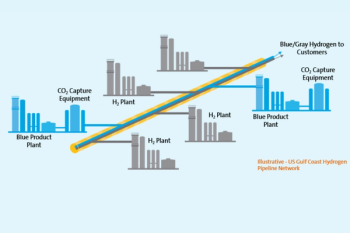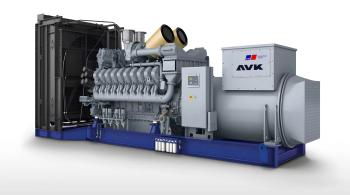
Applying Internet of Things to turbomachinery
The Internet of Things is a network of physical objects or things embedded with electronics, software, sensors, and network connectivity, which enables these objects to collect and exchange data. In simple terms, IoT can be thought of as extending the use of the Internet from its 25-year history of (essentially) connecting people to the newer concept of connecting things. IoT applied in the industrial realm is referred to as the “Industrial Internet of Things”, normally referred to as Industrial IoT or IIoT. A “thing” in the industrial context is an asset normally involved in plant operations. Adding sensing and communications/processing capabilities allows it to be referenced as a digital asset within the IIoT system. The data can then be transferred via a network to software (increasingly cloud based) for processing and analysis.
This article contains excerpts from the paper, “Industrial IoT Brings Benefits and Opportunities for Rotating Equipment Suppliers and Plant Operators” by Bob Gill and Tim Shea of ARC Advisory Group at the 2018 Asia Turbomachinery & Pump Symposium.
Two broad opportunities arise from the emergence of Industrial IoT and application of the technology. One concerns the plant itself and the owner operator, who is now able to improve and enhance operations by having much greater visibility on resources such as parts, machinery and people, allowing optimization of both maintenance and operations activities. The other is to do with OEM-supplied plant equipment, which can now be developed and delivered as smart, connected products and, consequently, provides the equipment manufacturer with the opportunity to offer a much higher level of service through being able to stay connected to the asset now out at the customer site. Increasingly, those connected plant assets are turbomachinery such as pumps, compressors, and turbines.
A major cause of low operational efficiency is equipment downtime, especially unplanned downtime. An ARC Advisory Group survey of senior executives and engineering, operations and maintenance managers in the oil & gas industry puts the annual production loss from unplanned downtime at 3-5 % of total yearly production. Across the process industries as a whole, with an aging asset base, the impact of unscheduled downtime runs into billions of dollars a year. Aside from lost production, unplanned downtime impact can be felt in added costs for labor and spares inventory, and in customer issues such as delayed deliveries. Maintenance that is not anticipated is also far more expensive – around 10 times more – than planned maintenance. And of course, the more critical the asset us to operations the greater the ramifications, and turbomachinery generally falls into this category.
While most companies would not be wholly unaware of the ramifications of unplanned downtime, the equipment maintenance strategies in place in the majority of plants do little to improve asset performance to a level to where it needs to be. Only a small minority of companies have evolved beyond conventional maintenance strategies, with the reactive and preventive approaches still very much in the majority. However, companies able to move to higher levels of predictive and prescriptive maintenance can get much closer the goal of almost zero unplanned downtime. While predictive maintenance provides early warning of impending equipment failure, prescriptive maintenance not only tells you a failure is on the way but also diagnoses the cause(s) and informs what you need to do to prevent its actualization.
Crucially, the move to higher maintenance maturity levels is enabled by adopting Industrial IoT technology, ideally along with advanced analytics. The IIoT part of this combination provides for the requisite sensing of running machine variables, such as temperature and vibration, plus the necessary processing and communications to move the data off the machine. Advanced analytics, particularly in the form of machine learning, is used to provide high-quality asset failure prediction, i.e. very early warning of impending failure, detecting previously “unknown” failures, and minimal false positives.
Machine learning (ML) is a type of artificial intelligence (AI) that enables computational capability without the need for explicit programming. So unlike traditional computers, which cannot provide decision results beyond those catered for by initially coded rules, machine learning based systems, like humans, can learn and hence adapt processing logic based on new inputs.
Recent industrial implementations of machine-learning based predictive maintenance systems illustrate the advantages of the approach over not just conventional maintenance strategies, but also non-AI based predictive maintenance. In one case of flow control system pump monitoring, machine learning moved failure prediction to 5-6 days in advance as compared to the 3-6 hours achieved with a predictive maintenance system based on custom engineered algorithms. In another case involving offshore wind turbines, which by their remote nature are highly expensive to repair especially in unplanned maintenance scenarios, machine learning improved degradation prediction of wind turbine gearboxes to 37 days from the previous three, with 0% false positives and negatives.
Newsletter
Power your knowledge with the latest in turbine technology, engineering advances, and energy solutions—subscribe to Turbomachinery International today.





